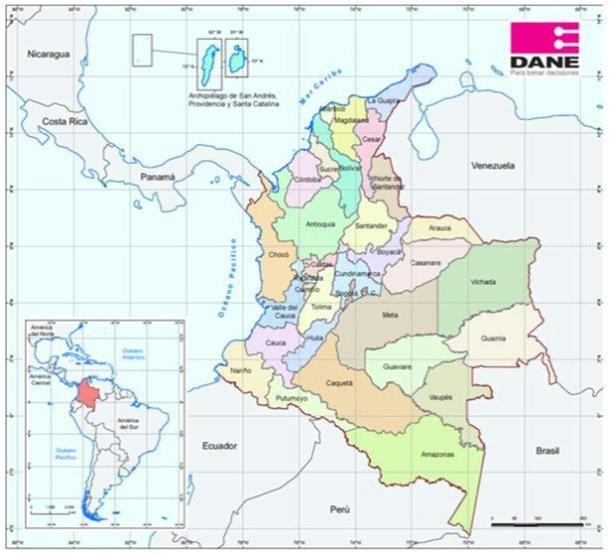INTRODUCTION
From 2015 to 2019, Colombia experienced real Gross Domestic Product (“GDP”) growth every year. Real GDP grew by 3.0% in 2015, 2.1% in 2016, 1.4% in 2017, 2.5% in 2018 and 3.3% in 2019. The growth of GDP in 2019 was mainly due to increases in domestic demand, private consumption and gross capital formation.
During 2019, all economic sectors experienced positive growth, with the exception of construction. The sectors that experienced highest growth in 2019 were services (4.8%); public administration and defense, education and health (4.9%), and financial activities and insurance (5.7%). In contrast, the primary sectors that experienced lowest growth were agriculture, livestock, fishing, forestry and hunting (1.9%) and mining (2.1%). Still, mining grew in 2019 after five consecutive years of contraction beginning with the 2014 oil shock.
Inflation, as measured by the change in the consumer price index, was 6.8% in 2015, 5.8% in 2016, 4.1% in 2017, 3.2% in 2018 and 3.8% in 2019. Inflation increased in 2019 as compared to 2018 mainly due to an increase in the prices of housing, water, electricity, gas and other fuels.
Due to the implementation of trade and foreign exchange liberalization policies, Colombia has experienced current account deficits in most years since 1994. In 2015, the current account registered a deficit of $18,564 million, the trade deficit increased to $13,479 million and the financial account deficit decreased to $18,244 million. In 2016, the current account deficit decreased to $12,036 million, the trade deficit decreased to $9,176 million and the financial account deficit decreased to $12,273 million. In 2017, the current account deficit decreased to $10,241 million, the trade deficit decreased to $4,470 million and the financial account deficit decreased to $9,558 million. In 2018, the current account deficit increased to $13,117 million, the trade deficit increased to $5,144 million and the financial account deficit increased to $12,415 million. In 2019, the current account deficit increased to $13,740 million, the trade deficit increased to $8,451 million and the financial account deficit increased to $13,051 million.
In 2019, exports of coal totaled $1,779.6 million, or a 23.9% decrease, exports of oil and its derivatives totaled $880.7 million, or a 5.2% decrease, and exports of nickel totaled $13.4 million, or a 2.4% decrease, compared to 2018.
Foreign direct investment recorded an increase in the capital account in 2019 of 26.3% compared to 2018. Foreign direct investment increased primarily as a result of an increase in investments in sectors such as commerce, restaurants and hotels and financial services. In 2015, net foreign investment inflows totaled $11,724 million. In 2016, net foreign investment increased to an inflow of $13,848 million. In 2017, net foreign investment decreased to an inflow of $13,837 million. In 2018, net foreign investment decreased to an inflow of $11,535 million. In 2019, net foreign investment increased to an inflow of $14,572 million, a $3,037 million increase compared to 2018.
Net international reserves at year end decreased from $47,323 in 2014 to $46,731 in 2015. At the end of 2016, net international reserves totaled $46,675 million and increased to $47,629 million in 2017. By the end of 2018, net international reserves increased to $48,393 million. At the end of 2019, net international reserves totaled $53,167 million.
Since 2014, Colombia’s ratio of total net non-financial public sector debt to GDP has increased from 42.8% in 2015, 42.9% in 2016, 44.2% in 2017 and 45.9% in 2018, to 47.4% in 2019. Colombia’s non-financial public sector recorded a deficit of 3.4% of GDP in 2015, 2.4% of GDP in 2016, 2.7% of GDP in 2017, 2.9% in 2018 and 2.4% in 2019. The Central Government’s deficit was 3.0% of GDP in 2015, 4.0% of GDP in 2016, 3.6% of GDP in 2017, 3.1% of GDP in 2018 and 2.5% in 2019.
On June 13, 2016, the executive board of the International Monetary Fund (“IMF”) approved a two-year arrangement under the IMF’s Flexible Credit Line (“FCL”) in SDR 8.18 billion, equivalent to approximately $11.5 billion. This two-year arrangement was a successor arrangement to the two-year FCL for
D-4
